The photographer Florian Rainer and journalist Jutta Sommerbauer document the stories of people from the war zone in their book Grey Zone: A Journey Between the Front Lines in Donbass [Grauzone: Eine Reise zwischen den Fronten im Donbass]. They have focused their research on the issues of personal positions in this conflict, the protection of individuality and future perspectives.
Grey Zone explores the new realities created by the militarised border. Everyday life is determined by improvisation, standstill and uncertainty, fear and melancholy, as well as people’s resilience and flickers of hope, mostly fuelled by the little things of everyday life. More to the journey here.
The Donbass region is a landscape that defies borders. Its land stretches to the horizon in gentle waves. Its fields are as large as an aristocrat’s estates. You can’t help but race along its dead straight roads. In spring and autumn, walls of fire blaze on its fields like a madman’s work of art. Now and again, when it’s quiet, you can hear the hooves of the mounted nomads’ horses that once thundered across the steppe. Dikoye pole, wild field, that’s what they also call Donbass.
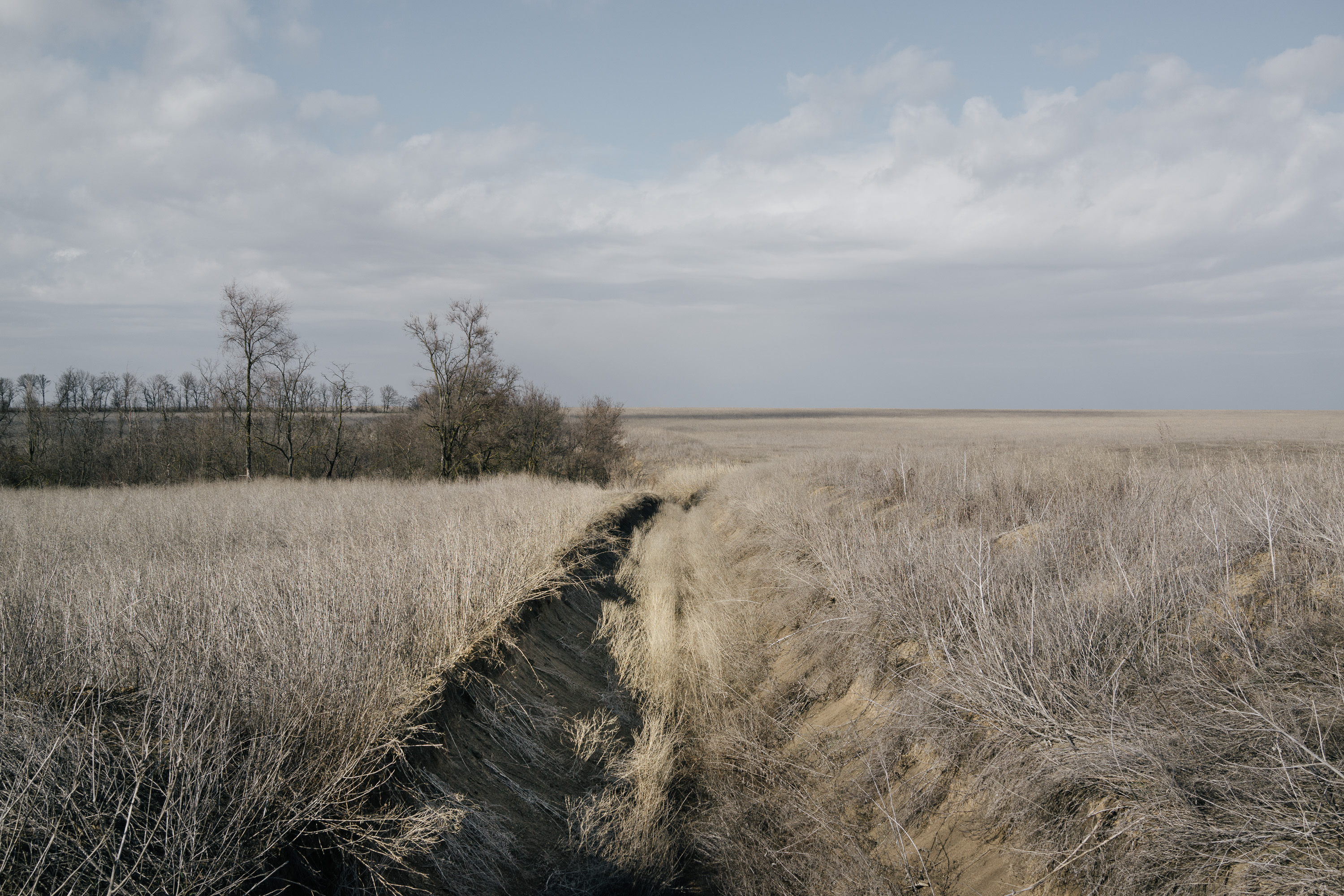
War is the worst enemy of the borderless landscape. It has driven itself into the ground and torn Donbass apart. The first, second and third lines of defence have been drawn, counting from the zero position. People think in terms of “us here” and “them over there”.
, wild field, that’s what they also call Donbass.
Dikoye pole, wild field, that’s what they also call Donbass.
The architecture of war: trenches, defensive walls, subterranean parking sites for military equipment. Tank traps run straight across the field, earth swells from the bomb craters. Burst sandbags lie at the roadside; concrete barriers have turned streets into labyrinths; coloured plastic shreds warn of minefields. There is not always enough money to put up signs.
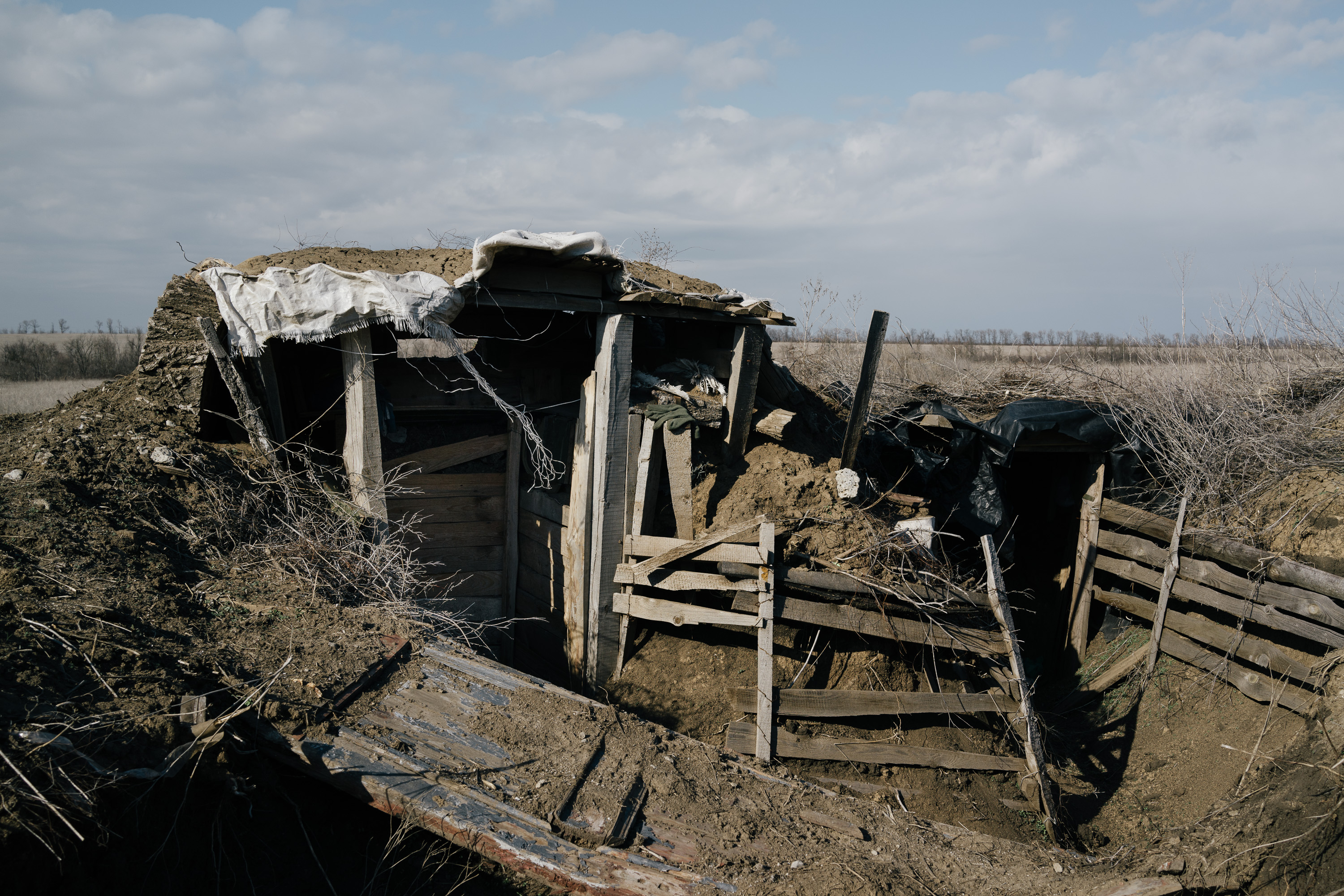
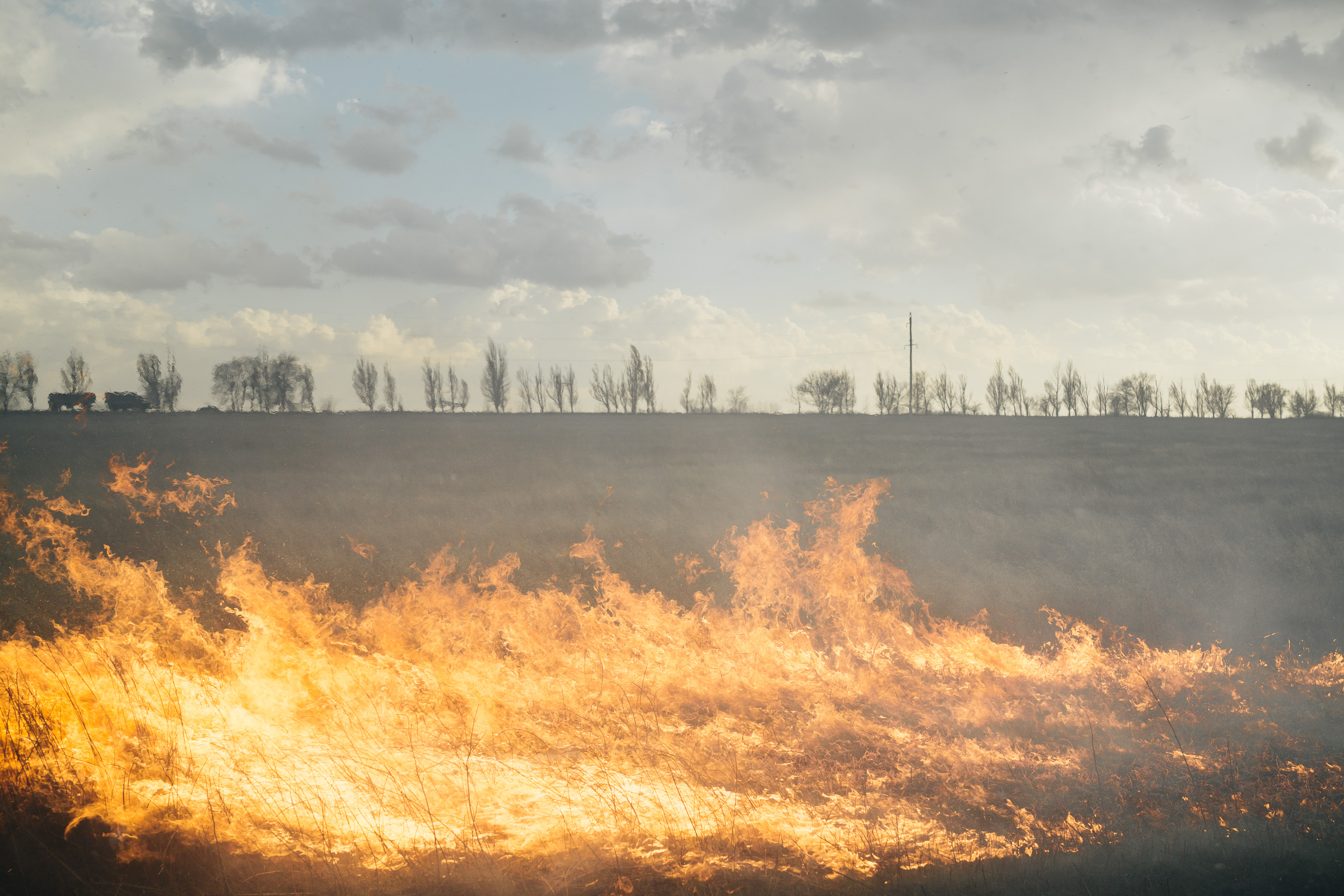
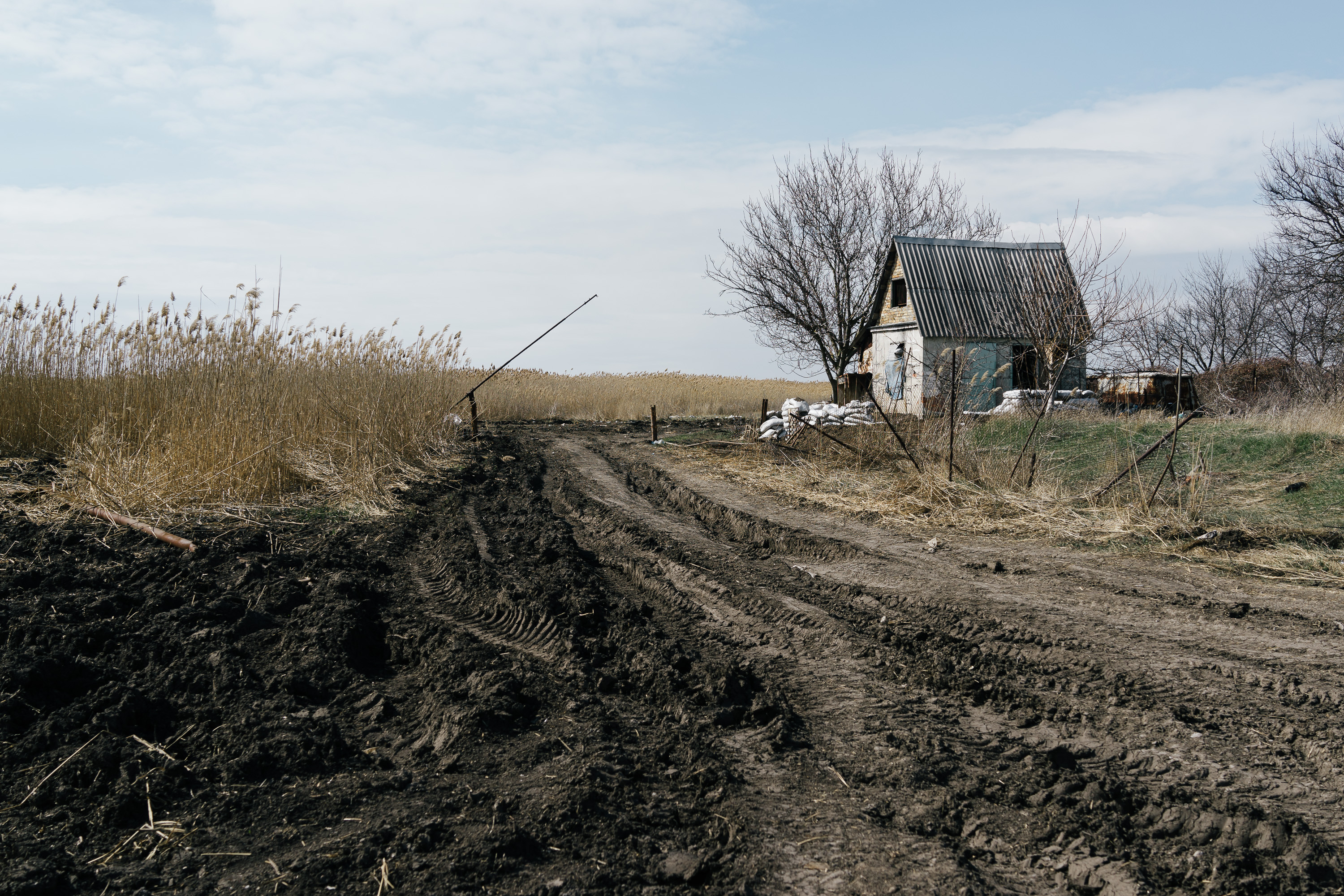
Since war moved to Donbass, nature has left. All that remains is topography, which must be controlled: strategic heights that must be conquered, fields that can be overrun, groves that provide cover, rivers that hamper progress.
War is the worst enemy of the borderless landscape.
Your eyes follow the soldiers’ index fingers. They point to where the enemy is: usually hiding near faded residential blocks, between chimneys and slag heaps, behind the mine head towers. The front line extends somewhere across the lush greenery between here and there. It is impossible to tell with the naked eye where the enemy’s territory begins.
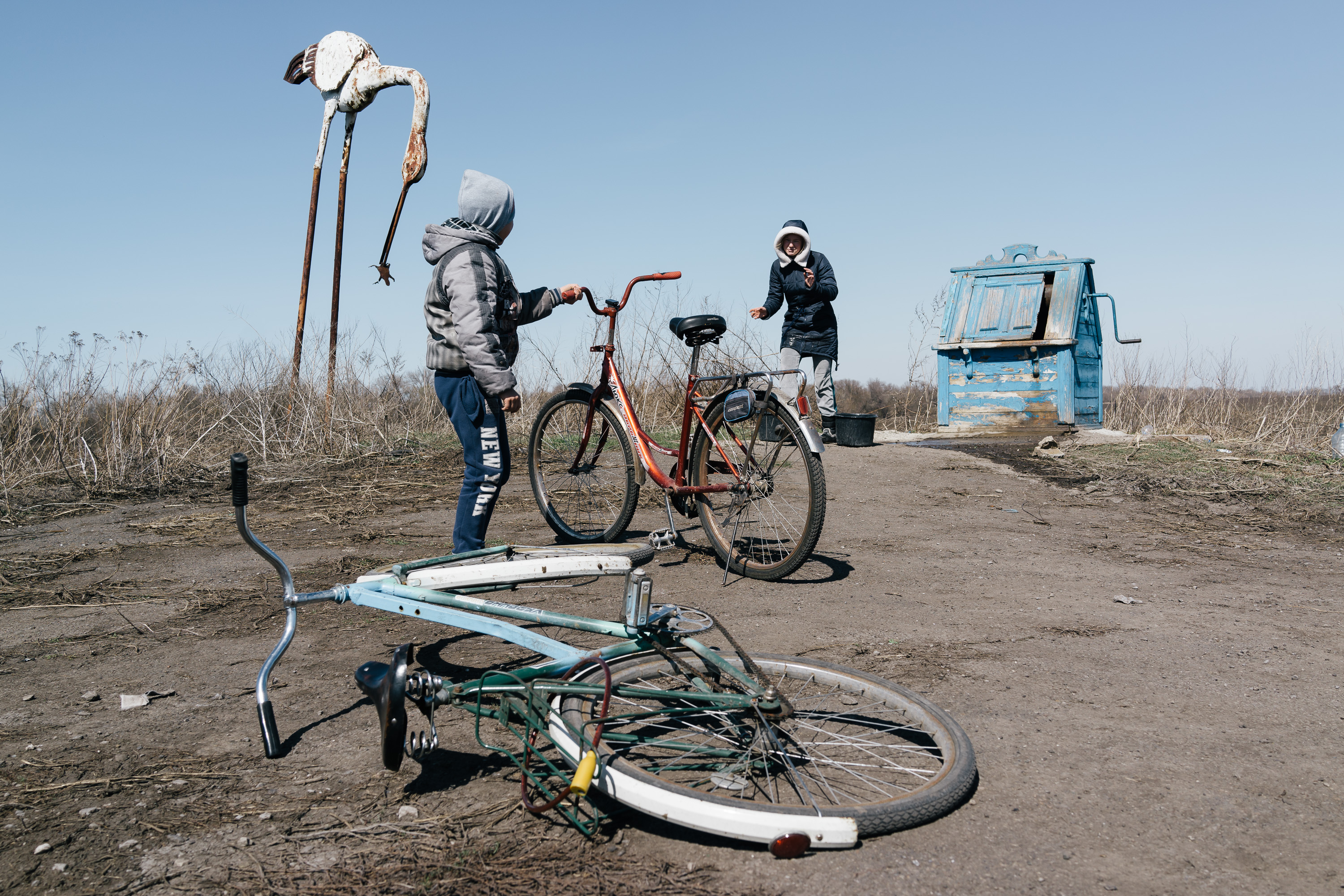
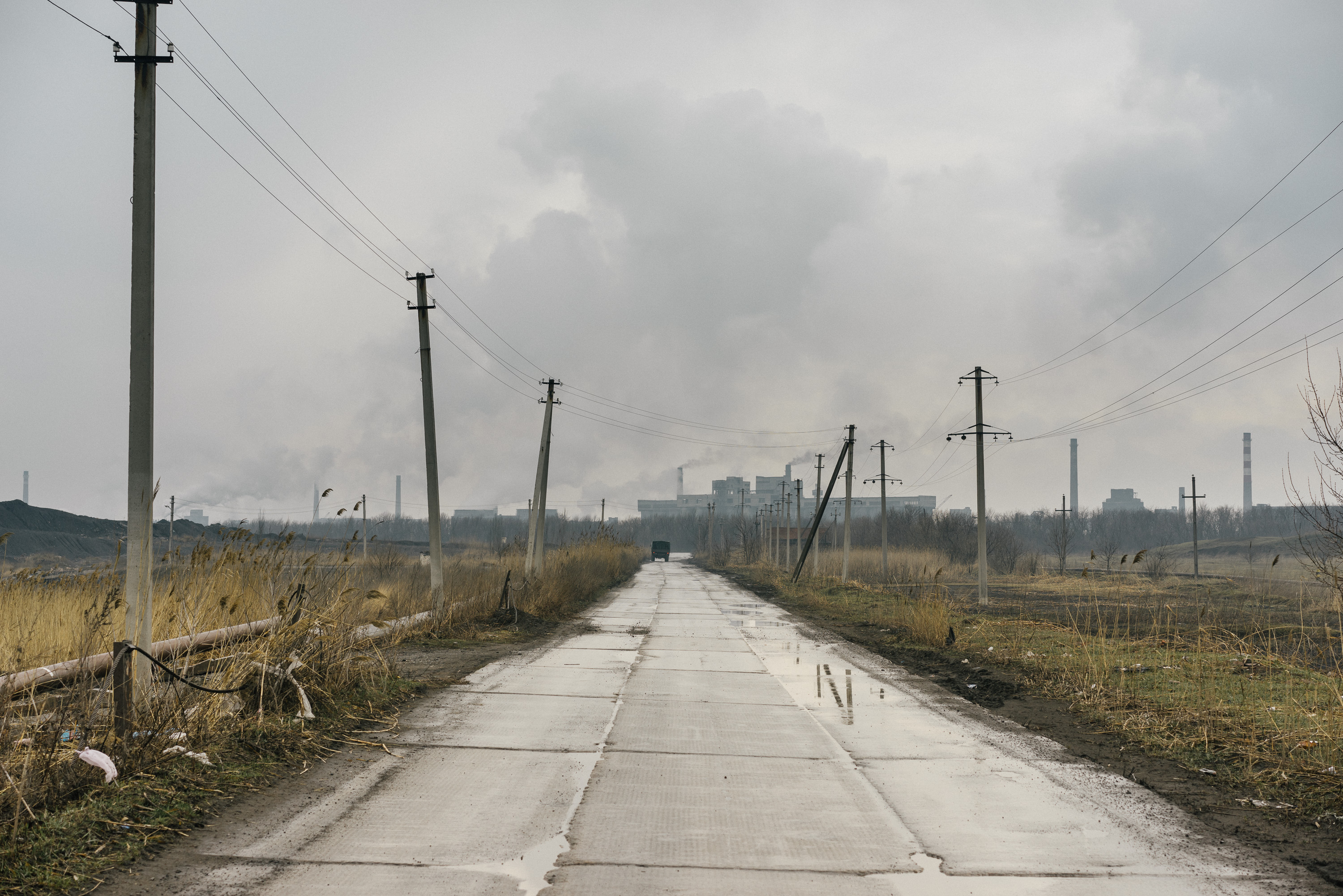
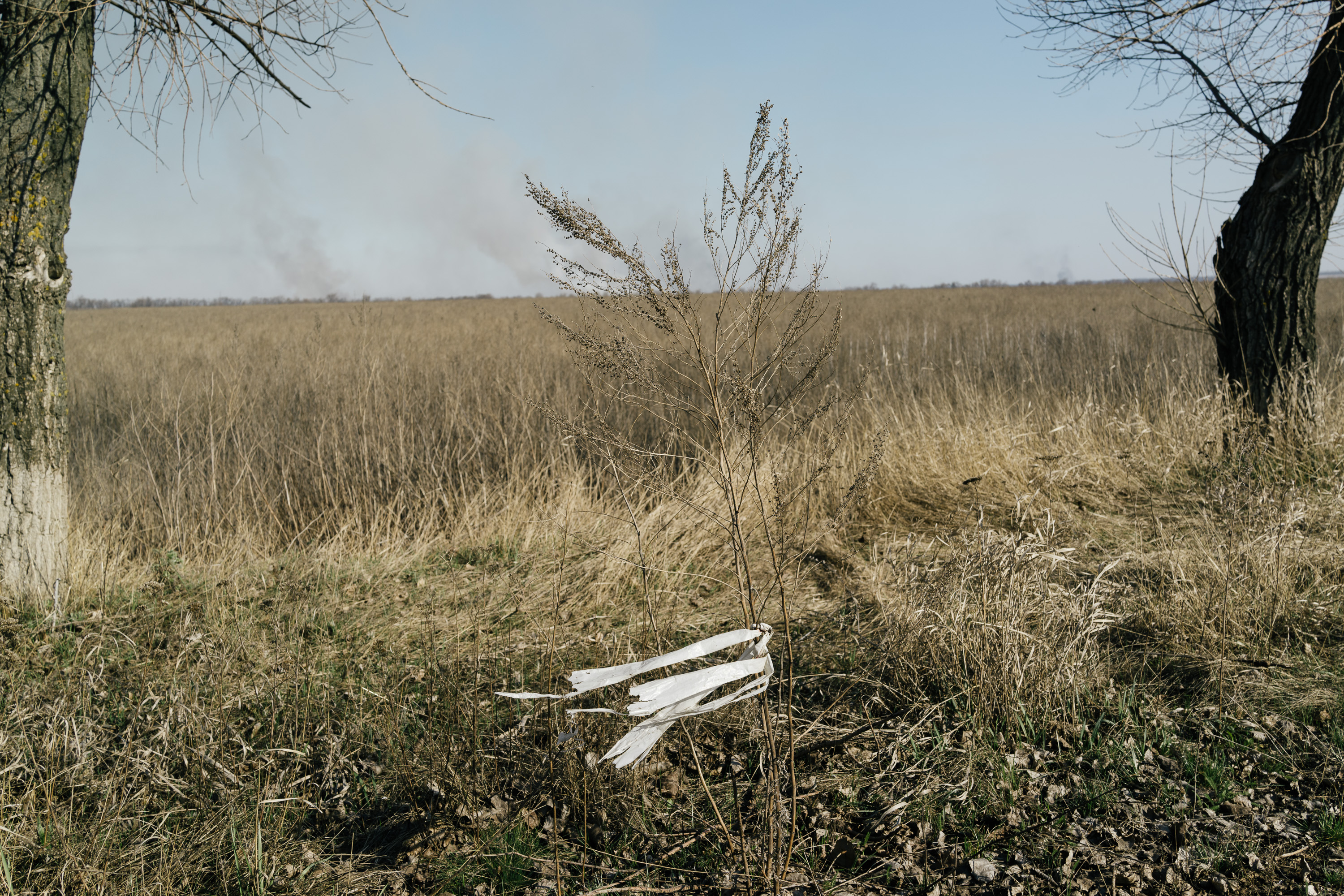
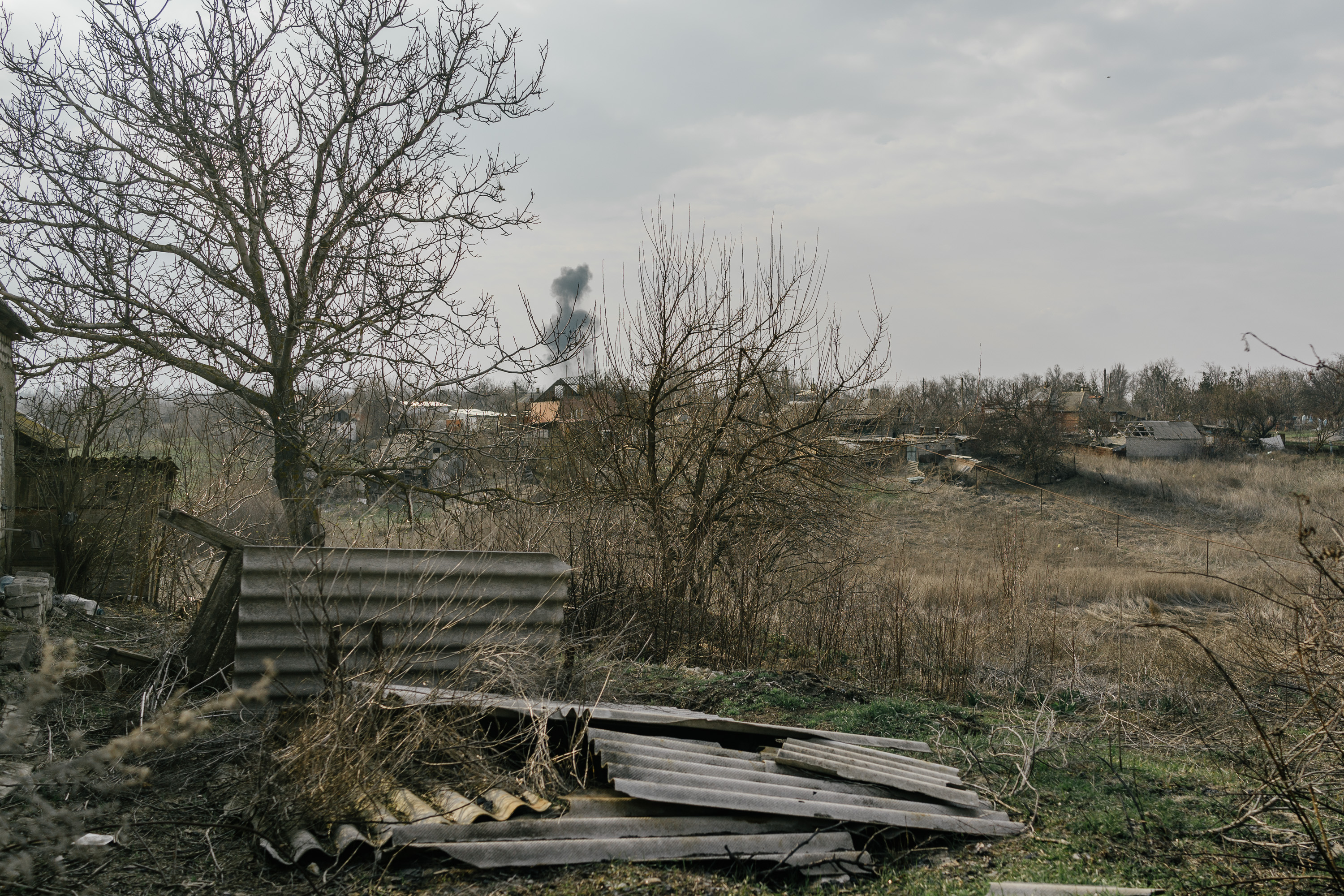
Original in German. Excerpt from the book Grauzone: Eine Reise zwischen den Fronten im Donbass [Grey Zone: A Journey Between the Front Lines in Donbass], published in April 2018 at bahoe books, Vienna. The research trips were made possible by funding from the Crossing Borders programme of the Robert Bosch Stiftung.
Translated into English by Barbara Maya.
This text is protected by copyright: © bahoe books / Florian Rainer, Jutta Sommerbauer. Imprint with courtesy of the publisher. If you are interested in republication, please contact the editorial team.
Cover picture and all photographs: © bahoe books / Florian Rainer.